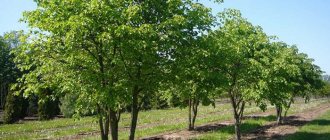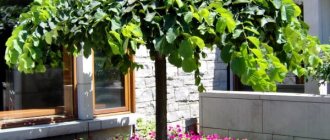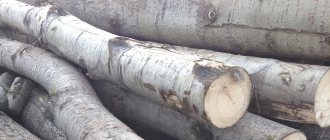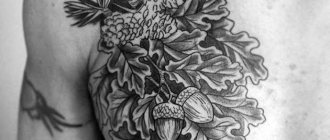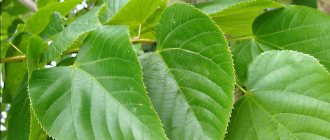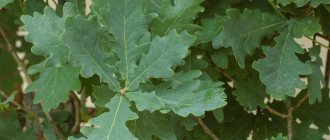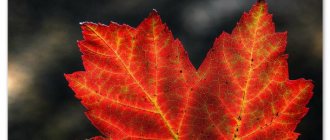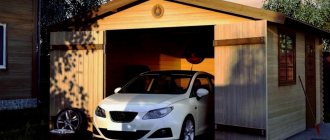It is not at all difficult to imagine a forest where the light of the sun barely filters through the trunks stretching towards the sky. The quiet rustling of leaves merges with the singing of birds, for which the beech tree has become a cozy home. When autumn falls on the earth, the forest lights up with various bright colors. And in the spring they give freshness and peace.
Many will agree that the forest is the true embodiment of unsurpassed beauty, especially if the beech tree grows in it. The most ancient specimens of the plant are up to 40 m in height. The trunk diameter is about 2 meters. Truly a majestic giant! In addition, its life expectancy often reaches 300 years. If only people could live that long!
It is interesting that beech wood begins to be harvested when it is more than 100 years old. In this case, the diameter of the trunk can be only half a meter.
Description, species differences
Beech grows somewhat faster than oak and for the first hundred years of its life, the size of the tree increases mainly in height and can reach up to 30-40 meters. Only after a century does the beech tree begin to expand in width and can reach almost two meters in diameter.
Quite often at the foot of this giant you can see basal paws, which also amaze with their gigantic size. A characteristic difference for the root system is that it does not have a main stem.
Beech leaves have a bright green color, eventually turning into dark brown in late autumn. The leaf shape is elliptical, with a sharp apex. The leaf size of an adult tree can reach up to 10 centimeters.
The fruits of the beech tree are small brown nuts. Ripening occurs in the second half of summer or by early autumn. A solid harvest of beech nuts usually occurs once every ten years.
In its natural habitat, beech has a dozen varieties, but suitable for cultural cultivation in garden plots and park areas, the most common are the following species:
Japanese beech
It is widespread in the east and is characterized by small, compact forms (its height is about twenty meters), has a branched trunk, with traditional leaves and color.
European beech
It grows mainly in European territory and has a standard height for this type of tree. It has dark green foliage with pointed edges.
Eastern beech
It grows mainly at the foot of the Caucasus Mountains and near the Black Sea. The foliage has the shape of an elongated oval. The height of such a tree reaches forty meters.
Large-leaved beech
The main type of beech trees growing in the North American states. It has a more rounded leaf shape than its counterparts. The average height is also approximately forty meters.
Areas of application
Beech is not only a beautiful, but also a useful tree. It is not only the trunk of a tree that is valuable to humans, but also its bark, leaves and even fruits.
Wood
Beech wood is still valued the most. It has high density and beautiful texture. Therefore, it is used in various fields.
Most of this material is used to make furniture. It is widely used in the production of things for the office and home. This wood is often used to make:
- durable chairs and tables;
- sofas and armchairs;
- bed frames.
The beautiful texture of light beech trees allows you to create luxurious furniture that looks expensive and has a long service life. In addition, durable barn and interior doors of various textures are made from such wood.
The material is also used to create knife handles, stands and cutting boards. Beech products are durable and look good in any kitchen.
Wood is also used to create parquet boards and natural laminate. They are durable and attractive in appearance. Beech parquet will fit perfectly into the design of any apartment. This material can be safely used when decorating a living room, kitchen or even a nursery. After all, it is natural and environmentally friendly. Its only drawback is its high price.
Plywood is also made from this material. It saws, cuts, polishes and grinds well. There is a large selection of material colors - from light to very dark. Beech is also used for lumber such as lumber, edged and unedged boards, furniture panels and veneer.
Beautiful crafts are also made from wood. The material is very easy to process, so you can easily make beautiful souvenirs and small wooden toys from it. Beech wood is used to create beautiful boxes and small containers.
Leaves and bark
Beech is used not only in construction, but also in medicine. For example, its dried leaves and crushed bark are perfect for creating various medicines. They are used to make products for:
- reducing blood cholesterol levels;
- treatment of the liver and gall bladder;
- raising the general tone of the body;
- improving blood circulation;
- healing of various types of wounds.
Fruit
Nuts are also widely used in various fields.
- Cosmetology. Beech nut oil is sometimes added to face masks, lotions or hair care products.
- Cooking. The nuts are used to make edible oil. It is light yellow in color and has much in common with olive. Flour is also prepared from the seeds of this tree. When cooking, it is usually mixed with wheat to make tastier pancakes or cookies. In the Caucasus, beech seeds are considered a folk delicacy. They are roasted and eaten like sunflower seeds.
- Animal husbandry. Animals also eat nuts raw or boiled. So, they are loved by squirrels, roe deer and wild boars.
And, of course, we must not forget that a powerful beech with a green crown will be an excellent decoration for any site. The main thing is to provide the young plant with proper care, and then after a few years the tree will delight the eye with its beauty and strength.
Planting and caring for beech
An important problem for the owner of a summer cottage will be the problem of choosing a place to plant a tree. As a rule, garden plots are not large in size, so it is worth remembering the size of the tree and the fact that the crown of the tree can greatly shade the area.
The process of planting and subsequent care of beech seedlings itself does not require special knowledge. It is enough to adhere to the algorithm and rules.
The most optimal time of year for planting seedlings is spring, when the buds have not yet awakened. Otherwise, growth retardation and disease may occur, even of very strong seedlings.
Before planting a beech tree, dig a hole for planting, usually 0.8 m by 0.8 m. A drainage made of expanded clay or broken brick is placed at the bottom of the hole. The height of the drainage layer is at least 0.1 m. During planting, it is a good idea to add fertilizer, ideally mixed with the excavated soil. This will provide a good foundation for the survival of the young beech.
To retain moisture at the roots of the tree, the surface of the soil around the tree must be covered with mulch. Tree planting itself is recommended to be done in dry, calm weather.
When describing planting a beech tree, one cannot fail to mention fertilizing, the timeliness of which will greatly simplify future care. So, after a few weeks it is necessary to start applying organic fertilizers.
Properties of wood
Fresh beech cut
The texture of the wood is thin, the color of the core is reddish-brown, pale beige or pink-red, depending on the place of growth. The wood is heavy, durable, and can withstand bending well.
Wood of all types of beech has one significant drawback - it is very susceptible to rotting. Cut beech absorbs moisture very strongly and begins to mold
Therefore, it is very important to put it into processing almost immediately after harvesting. You need to dry it gradually, otherwise it will warp and crack.
Beech wood is most often used indoors. For outdoor use, it is subjected to special treatment, which increases its resistance to moisture and other adverse factors. After steaming, beech not only bends better, but is also easier to process.
Growing beech seedlings
There are several main methods of propagation; everyone will decide for themselves how to grow a beech tree. The most common are:
- generative method
- grafting method
- using cuttings
- offshoot cultivation
For a beginning gardener, the most accessible and effective method is the generative (seed) method. Harvesting begins in mid-October, when the ripe fruits fall from the tree. During the winter, seed material must be stored in a cool, dry place, for example in a cellar.
8-10 days before planting, it needs to be taken out of the cellar and warmed up for several days. The collected seeds are kept for some time in a solution of potassium permanganate.
After sowing the seed, the planting site should be covered with thick cellophane for some time; this will keep the soil moist for the time necessary for the seeds to hatch. Young shoots of the future tree will appear in a few days.
Seasonal colors
The composition “Seasons” is considered a harmonious combination of shades.
"Spring". Yellow acts as the main tone. Complement it with other shades - a fresh mix of white, pink, beige, red, green, blue and purple.
"Summer". Here the base is blue, the palette also includes white, brown, yellow, blue, black, beige, green, purple and gray.
"Autumn". Red is used as the main tone, and blue, purple, pink, gray, white, yellow, brown, and black are additionally used.
"Winter". Blue is the main color in the interior. It is recommended to decorate with black, red, yellow, white, brown, purple, pink and gray.
Choose a color scheme to your taste that will transform the interior.
Diseases and pests
Like all representatives of the earth's flora, beech wood is susceptible to insect attacks and fungal diseases such as:
- caterpillars
- silkworms
- lacewings
- bark beetles
The above insects quickly destroy the foliage of the beech tree. Which can lead to the death of even an adult tree. Prevention and timely treatment of tree branches with modern preparations will help you avoid this.
A sign of fungal diseases is wilting of leaves and the presence of cobwebs. The main way to combat fungal diseases is treatment with fungicidal preparations.
General characteristics of beech trees
All listed species reproduce by layering and grafting. From the general variety, trees are distinguished by a group of certain characteristics. They are presented in detail below.
- Crown configuration: pyramidal, weeping, with very long (up to 5-6 m) central branches that fall down.
- According to the configuration of the crown and silhouettes of the leaf blades: the comb type is low-growing, with small, curved, deeply serrated leaves; sinuous type of dwarf growth, has sinuous spreading branches, drooping at the corners, with small leaves; snail-shaped type - dwarf growth, leaves spoon-shaped concave.
- According to the size of the leaves and their outline: oak-leaved, coarse-toothed, round-leaved, split-leaved, fern-leaved, broad-leaved.
- According to the crown configuration and leaf color: purple-weeping, golden-weeping.
- According to the shape and color of the leaves: Rogan with pinnately lobed, purple leaves; Ansorgha - with purple, incised leaves; largeleaf purple - with large, glossy, dark purple leaves, very beautiful.
- According to the color of the leaves: white-variegated, golden, marbled, with spotted white-green leaves, golden-edged, pink-edged, striped (yellow and green stripes), tricolor (white, green, pink veins), dark purple (color lasts all summer).
Beech in landscape design
The beech tree is significantly different from other trees with its extraordinary appearance. Looking through photographs of groves with beech trees, it is amazing how multifaceted nature is.
Man, striving to be as close to nature as possible, tries to surround himself with such beauty as much as possible. Both in park areas and in private plots, this tree can give a majestic and fabulous look to any area.
Grade of beech lumber in accordance with GOST
The grade of beech lumber is determined by the presence and degree of manifestation of the following defects and processing defects:
- Dimensional accuracy;
- Humidity;
- Rot;
- Cracks;
- Knots;
- Mold damage;
- Breakouts, etc.
First grade (Grade A)
Does not allow:
- fused healthy knots with a diameter of more than 1 cm; knots on faces more than 10 cm wide; knots on the edges (more than 1/3 of the thickness for a single and paired knot), as well as more than 20 partially fused and unfused knots;
- falling out and rotten knots, cracks, porosity, mushroom spots and rot;
- acute wane
Allows:
- individual stripes and spots of mold and fungal stains on the sapwood;
- mechanical damage and processing defects within 5 mm;
- slope of the cut within 5% of the thickness and width of the lumber;
- blunt wane (up to 1/5 of the width of the lumber);
- longitudinal winging of the face and edge (up to 0.5% of the length);
- transverse winging (up to 1% of the width of the lumber).
Second grade (Grade B)
Does not allow:
- fused healthy knots with a diameter of more than 2 cm; knots on faces more than 20 cm wide; knots on the edges (more than 1/2 thickness for single and paired knots), as well as more than 40 partially fused and unfused knots;
- falling out and rotten knots, cracks, porosity, mushroom spots and rot - more than 10 pcs.;
- sharp wane more than ¼ of the width of the edge.
Allows:
- mold damage;
- wormholes (but no more than 3);
- mechanical damage and processing defects within 5 mm;
- slope of the cut within 5% of the thickness and width of the lumber;
- blunt wane (up to 1/3 of the width of the lumber);
- longitudinal winging of the face and edge (up to 1% of the length);
- transverse winging (up to 2% of the width of the lumber).
Does not allow:
- fused healthy knots with a diameter of more than 5 cm; knots on faces more than 50 cm wide; partially fused and unfused knots more than 30 pieces;
- falling out and rotten knots, cracks, porosity, mushroom spots and rot - more than 25 pcs.;
- sharp wane more than 1/2 of the width of the edge.
Allows:
- knots on the edges;
- mold damage;
- wormholes (no more than 5);
- mechanical damage, processing defects and minor deformations;
- slope of the cut within 5% of the thickness and width of the lumber;
- blunt wane (up to 1/2 of the width of the lumber);
- longitudinal winging of the face and edge (up to 2% of the length);
- transverse winging (up to 3% of the width of the lumber).
Beech photo
Part used
Beech nut and wood refer to the part of the tree used. The kernel of the nut contains tannins and nitrogenous substances, fatty oils, sugars, starch, tocopherol, fiber and organic acids, including citric and malic acids. They contain the alkaloid fagin and ash. It should be noted that the alkaloid fagin is a toxic substance. If raw nuts are consumed immoderately, this will lead to gastritis and headaches, as well as inflammation of the small intestine. Therefore, you should handle these fruits carefully.
Spreading
European beech is predominantly distributed in the Northern Hemisphere. The species' range covers almost all of Western and partly Eastern Europe. In addition to this, another representative of the Beech family grows on this territory - the eastern beech. Majestic trees form magnificent parks in which peaceful darkness and silence reign.
Beech, a photo of which we posted in this article, grows in Russia, Belarus, and Western Ukraine. The tree is undemanding to soil composition and grows on almost any soil, although it develops better on loamy substrates. It is moisture- and heat-loving, and freezes slightly in harsh climatic conditions.


